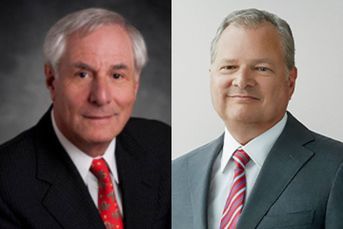A new pay model: 300 advisers move, and the entire industry feels the shift

As some wirehouses hire more salaried advisers, speculation mounts that the traditional way of compensating brokers is being threatened.
Bank of America’s decision to move 300 Merrill Edge advisers into its Merrill Lynch Wealth Management branch offices last month didn’t attract much attention. But 10 years from now, people might point to it as a watershed moment in the evolution of compensation for financial advisers at major brokerage firms.
Unlike traditional brokers, who are paid a percentage of the revenue they bring into the firm, Merrill Edge advisers are paid a salary. Industry experts see the move by Bank of America as an indication of how banks and wirehouses want to shift compensation away from the traditional commission-based system toward a salaried model.
While such a transition could cut costs and increase profits for the firms, it could dramatically reduce compensation for advisers and change the culture at the wirehouses from an entrepreneurial “eat what you kill” model to a more corporate “eat what you are served” mindset. It also could make it easier for firms to cross-sell banking products and hold onto clients when advisers leave their firms.
“The next frontier for the big banks is adviser compensation,” said Danny Sarch, an industry recruiter. “Since the credit crisis in 2008, they have cut costs from everywhere else in the business, from operations, real estate, management — and now recruiting.”
Pay based on the grid
Currently, the overwhelming majority of the 51,000 advisers who work at the wirehouses — Merrill Lynch, Morgan Stanley, Wells Fargo Advisors and UBS — are paid based on a plan known in the brokerage industry as the grid, a Byzantine document dozens of pages long that the firms typically update each year to encourage and reward advisers for increasing certain revenue streams or selling more of certain products.
Today, wirehouse advisers typically take home 35 cents to 45 cents of every dollar of revenue generated from the grid, by far the largest expense at a wirehouse. That means an adviser serving clients with $100 million in assets and bringing in $1 million in revenue would earn between $350,000 and $450,000 a year. Replacing that adviser with an employee earning an annual salary of $150,000, with perhaps another $50,000 in bonus, would cut costs considerably for the wirehouses.
“Two things are going on here,” said Jerome F. Lombard Jr., president of the private client group at regional broker-dealer Janney Montgomery Scott. “If [a commission-based adviser] can get replaced by a salary-plus-bonus employee adviser, you are going to lower costs.
“The other thing with a salaried employee is that he will likely toe the line and offer bank products to clients, cross-selling the customer to the liking of the bank parent,” he said.
The stakes when it comes to adviser pay are considerable for the Big Four wirehouses, which retain a dominant position in the financial advice and wealth management markets. Advisers at the four wirehouses managed or controlled a staggering $6.5 trillion in client assets, or a little more than one-third of the wealth management industry’s total, at the end of 2016, according to a report last year by Sanford C. Bernstein & Co.
From the firms’ point of view, reducing pay to advisers would be the most significant way to boost profits, according to industry observers, since compensation is the biggest expense at any brokerage.
For example, Morgan Stanley’s total compensation for its wealth management division was 55% of revenues in 2018, a figure that includes financial advisers and support employees, said Christian Bolu, analyst at Sanford C. Bernstein.
“We estimate other wirehouse firms have similar compensation ratios as [Morgan Stanley], with total compensation between 50%-60% of revenues,” he said.
The 300 salaried advisers Bank of America wants to move to its branches by the end of the year will still be part of the company’s Merrill Edge platform, which operates both as an online investment portal and call-in center for clients with less than $250,000 in assets.
Bank of America employs close to 2,800 salaried Merrill Edge advisers. And the bank wants to increase that number dramatically, one former Merrill Lynch executive said.
“There’s 3,000 Merrill Edge advisers, and my perception is the bank believes that can grow to 10,000,” said the former Merrill Lynch executive, who asked not to be named. “Bank of America does not want to take its franchise of tens of millions of bank clients and then refer them to an investment channel that pays 50 cents on the dollar to a Merrill Lynch adviser.”
Merrill Lynch spokesman Matthew Card had no comment when asked about potentially having 10,000 Merrill Edge advisers in the future.
Capture more clients
Merrill Lynch executives have said the reason for the move is to capture more clients whose assets are not large enough to warrant being assigned a traditional adviser and not as a way to move toward a salary-based compensation system.
“The grid will be living on at Merrill,” said Andy Sieg, president of Merrill Lynch Wealth Management.
“The grid is at the core of the [financial adviser] comp system,” he said, adding that it is the best way to compensate advisers for being entrepreneurial.
Merrill Lynch is not the only wirehouse to hire salaried advisers. One veteran Well Fargo adviser said his firm also has hired hundreds of junior, salaried “financial relationship advisers,” while a recent shift in the advisers’ deferred compensation plan incentivized them to hand over clients with less than $250,000 in assets to the salaried advisers.
“Wells Fargo Advisors and Merrill Lynch will just keep increasing the thresholds and requirements for advisers to keep their clients, pushing more and more as time goes on to move clients to the salaried staff,” said the adviser, who asked not to be named. “That’s the long game for those firms.”
Wells Fargo says it sees the younger, salaried advisers serving as a complement to the experienced advisers who are paid from the formula off the grid, allowing those veterans to focus on clients with more assets. With hundreds of such salaried advisers in place at wealth management branches, Wells Fargo is planning to expand the program into its bank branches that offer securities.
“It used to be the adviser with the most accounts wins,” said Diane Gabriel, head of next generation talent at Wells Fargo Advisors. “Today, it’s the adviser with the best relationships.”
It’s not clear whether Morgan Stanley and UBS intend to hire salaried junior staff. But Morgan Stanley CEO James Gorman has talked for several years about the firm’s desire to curb the expense of adviser compensation.
Last summer, Morgan Stanley also made it more difficult to work with smaller client accounts, or those with $100,000 to $250,00 in assets. When it rolled out its 2019 pay grid last July, it said advisers who had such accounts would see a reduced payout of 25% if the clients did not get new goals-based financial planning services.
‘Hammered’ by small accounts
“If you are an adviser with a lot of accounts under $250,000 and you aren’t receptive to the new stuff, you are going to get hammered,” one Morgan Stanley adviser, who asked not to be named, told InvestmentNews at the time.
Morgan Stanley spokeswoman Susan Siering said the firm has no plans to do away with its pay grid for advisers.
Jason Chandler, head of wealth management USA at UBS, said in an email that “to attract the best advisers in the industry, we have established what we feel is the best compensation structure in the industry and we have no plans to make changes that would undermine that.”
If wirehouses indeed are evolving their pay models toward salaried personnel, it comes at an opportune time. The average wirehouse adviser is in his 50s and thousands will likely retire across the industry in the next decade, potentially putting their clients in play. The wirehouses want to hang on to those clients and are aggressively buying books of business from retiring advisers. Will they hand those clients over to salaried employees and retain a greater share of the revenue, or divvy them up among advisers paid from the grid?
“Broker-dealers are trying to address the fact that they are standing at the edge of a generational shift in the wealth management industry,” said Ed Louis, senior analyst at Cerulli Associates. “We reported last year that over the next decade, 40% of advisers will leave the industry because of retirement.”
There’s traditionally a high rate of failure among wirehouse rookies and trainees. Paying them a salary that increases over time would be an easy way to create a more supportive work environment and eventually build a force of younger advisers who could take over for those who will retire, Mr. Louis noted.
Recruiting pullback
Supporting this notion is the fact that most of the wirehouses have pulled back from recruiting, no longer interested in paying out big signing bonuses to lure advisers from their competitors. The majority of wirehouses have said they are opting to put their money into training rather than recruiting.
Two of the wirehouses, Morgan Stanley and UBS, withdrew from an industry agreement known as the broker-protocol for recruiting in 2017, making it more difficult for advisers to leave the firms and less likely that they would be recruited away.
“What kept the wires from cutting adviser compensation in the past was the fear that a rival would poach reps and advisers,” Mr. Sarch said. “That threat is still there, but with the decline in recruiting, it’s simply not as great.”
Learn more about reprints and licensing for this article.








